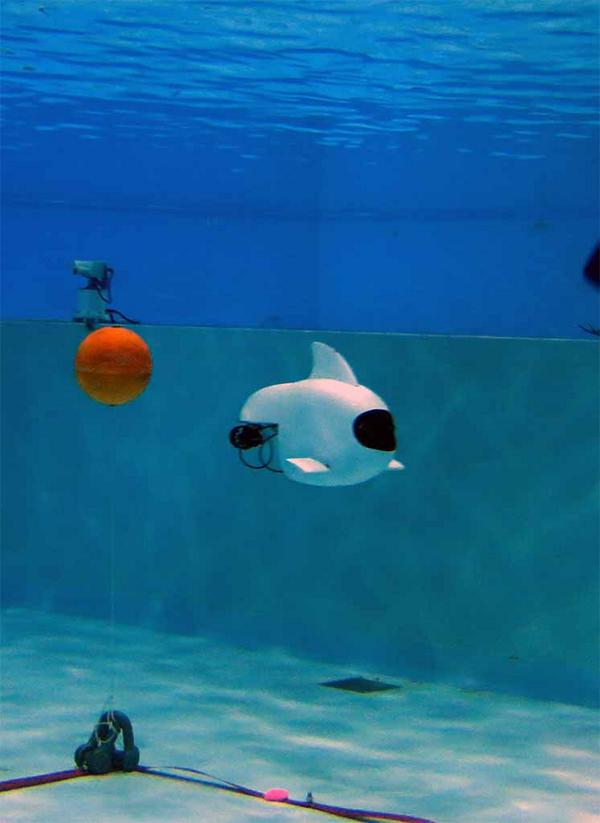

 |
||
|
::: NTU Underwater Vehicle Lab Wins Gold with Extremely Agile Robotic Fish |
||

“Iron Fish” is capable of high-speed vertical and horizontal travel, as well as on the spot rotation.
A team from National Taiwan University’s Department of Engineering Science and Ocean Engineering took home first place at the 2014 JAMSTEC Underwater Robotics Competition for their design of a sophisticated drone that can travel with great agility under water. The NTU team, formed by the faculty and students of the NTU Underwater Vehicle Lab, beat over 10 teams from the world’s best universities and research institutes in winning the first place. This is also the second time that an NTU team had won gold at the JAMSTEC contest since 2012. Dubbed the “Iron Fish,” the winning robot is the collaborative production of the NTU team and the National Museum of Marine Science and Technology. The fish was built under the objective to help educate the public on such robots’ designs and movement principles through such underwater technologies as propelling, controlling, and signal processing. The slick black-and-white Iron Fish is 90 cm in length and 20 kg in weight. Despite its size, the Fish can move between objects at speeds of up to one meter per second as it is capable of detecting space and direction through the piezometer, electric compass, and a pair of sophisticated sensors on either side of its body. It also comes with a pair of cameras as eyes and a lithium-polymer battery that can support six hours of continuous operations. In addition, Iron Fish is propelled through a physiological motion that is similar to that of a shark, which uses its pectoral fins to create lift so as to stay afloat. Joint with its caudal fin which is driven by a hidden motor, the Fish can move forward, backward, and even make horizontal rotations. The top of the drone was also designed to emulate the shark’s dorsal spine, and inside the spine sits a wireless antenna and an optical sensor that enables for remote upgrading of the robot’s firmware when it surfaces above water. Yet the most important specifications that secured that Iron Fish would win gold are the fact that it not only dives and rotates with great agility, but also with extraordinary speed! Led by Professor Jen-Hwa Guo (郭振華), the students of the award-winning Underwater Vehicle Lab team include Yi-Lun Chiu (邱奕倫), Han-Ying Chen (陳漢穎), Tai-Ching Tang (唐泰清), Kai-Min Zhang (張凱閔), Bei-Li Guo (郭倍豊), and Sheng-Wei Huang (黃盛煒). |
||
No. 1, Sec. 4, Roosevelt Road, Taipei, 10617 Taiwan(R.O.C.)
Phone: +886-2-3366-3366 Fax: +886-2-2362-7651